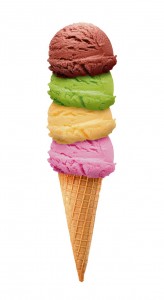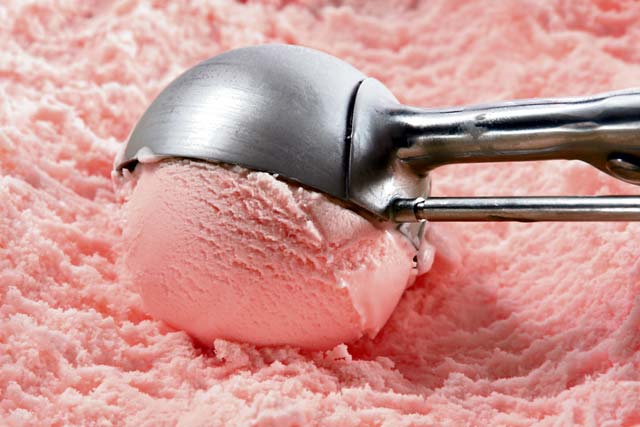
How do you know you’re getting close to summer? Your favorite ice parlor opens its doors again! Is there a nicer way to treat yourself than to sit outside and enjoy the taste of gelato?
The first written reports on ice cream date back to the times of Alexander the Great when glacier ice was combined with nectar or honey. The Roman emperor Nero Claudius Caesar (A.D. 54-86) sent runners into the mountains for snow to be flavored with fruits and juices. Over a thousand years later, Marco Polo brought a recipe from China for a type of frozen delight that found its way to the tables of the European royalties.
In the middle of the 17th century, ice cream was made available to the general public. A Sicilian founded one of the first coffeehouses in Paris and introduced the Italian ice cream “gelato” to his guests, among which were the greatest thinkers of Europe at the time, from Benjamin Franklin to Victor Hugo. One of his regular customers, Voltaire, even mentioned the new delight: “Ice cream is so exquisite. What a pity it isn’t illegal.”
Today you can find hundreds of flavors, some more than extravagant like Black Mamba (black ice cream with cherry and popping candy), and every proper ice cream parlor will pride itself with its own new creation. However, despite fashion products like Sallow Thorn-Orange and Creme Brulee, the most popular flavors in Germany are plain vanilla and chocolate.
In 2012, it was recorded that every German consumed 7.7 liters of ice cream, but in terms of who eats the most ice cream, the United States tops the list with 17 liters per head, outpacing Australia (10.3 liters), Norway (10.2 liters) and Sweden (8 liters).
But don’t get ice cream and gelato confused. They are not the same. Real handmade gelato contains much less fat and air and is served at a higher temperature, which makes it a lot more creamy and enables more aromas to reach the taste buds of the tongue. In short — it tastes more intensive. Proper gelato is produced fresh on a daily base to be sold immediately. Industrially manufactured ice cream on the other hand is produced for long time storage, in greater quantities and with much fewer flavors.
This difference of production makes it important to watch out for hygiene. When choosing your parlor, always look behind the counter. If the scoop sits in a muddy brew and doesn’t get rinsed after each helping, leave right away. It is not healthy.
Also, a simple sign saying “homemade” is not legally binding. The product may still have been purchased from an ice cream factory. So ask the vendor if what you get is truly gelato. Look for creaminess, choice and genuine taste. But the most convincing sign of good gelato is the waiting line outside!
Indeed there is a great discussion going on about whether one’s own self-made treat is better than the one from an ice cream parlor.
While there are kitchen tools for making creative and individual ice cream at home, it lacks the comfort aspect of sitting in the sun and having it served by a waiter. It’s a matter of taste!

Check out these ice cream parlors in the KMC:
• Eiscafe Venezia, Eisenbahnstraße 46, Kaiserslautern
• Eiscafe Roma, Pariser Str. 38, Kaisers-lautern
• Eis-Riviera Lucia Pilotta, Mannheimer Straße 92, Kaiserslautern
• Eiscafe Dolce Vita, Eisenbahnstraße 1, Kaiserslautern
• Eiscafe-Pizzeria Gondolierem Hauptstr. 85, Hochspeyer
• Cafe Bistro Brillant, Hauptstraße 45, 66904 Brücken
• Eissalon Delfino, Saar-Pfalz-Str. 115A, 66424 Homburg
• Eiscafe Dolomiti, Kaiserstr. 28, Landstuhl
• Eiscafe Florencia, Ludwigstraße 5, Landstuhl
• Eiscafe Venezia, Landstuhler Str. 25, Ramstein-Miesenbach
• Venezia, Hauptstr. 32, Pirmasens
• Eiscafe Felder, Alte Winzer Str. 5, Pirmasens
• Eiscafe Cappucino, Hauptstr. 10, Pirmasens
• Eiscafe Cantonati, Hauptstr. 21, Zweibrücken


